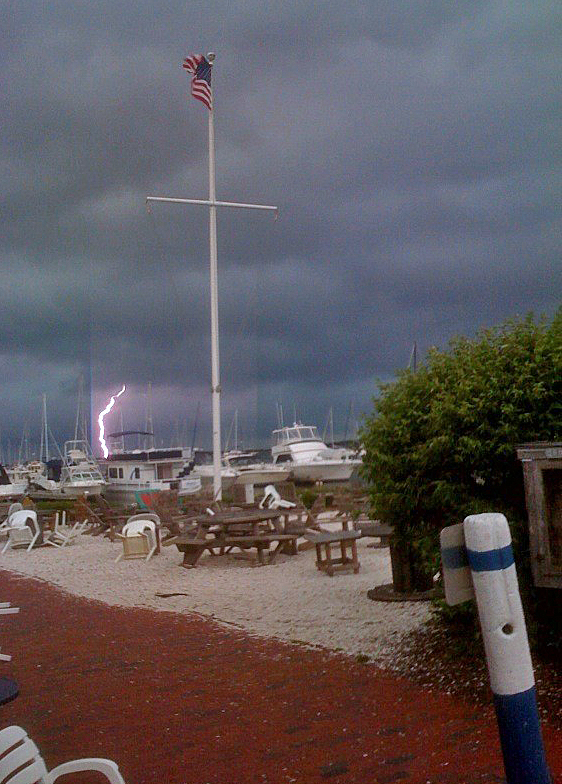The North Atlantic hurricane season is in full swing and things are getting interesting in the tropics. Now would be a good time to refresh our memories about storm preparation.
In our experience, a boat’s success in weathering a storm is dependent 50% upon luck, and 50% upon the skipper’s preparation. Your priority should be to secure your boat properly to minimize potential damage to your vessel and those around you. The main things are to reduce windage and secure items which might become projectiles if they catch the wind. The following recommendations do not guarantee that your boat will escape damage, but will improve the potential for minimizing damage during a storm:
1. Secure all on-deck equipment such as antennas, fenders, dodgers, bimini tops, rafts, ladders, fishing gear, chairs, dock boxes, etc. All these things can fly. They hurt when they land, and they almost always sink.
2. Because of the likelihood of heavy rain, check that your bilge pumps are working properly, that your scuppers are clear of debris, and that your batteries are fully charged. If your boat is in a slip, don’t count on shore power because outages are common. If you have any doubts about the condition of your batteries, this might be a good time to replace them. If your boat is on the hard, remove the drain plug(s).
3. Check the condition of your dock lines. If they’re frayed, replace them. If they’re in good shape, add another and chafing gear where it makes sense. Assume that at least one cleat, piling or line will fail, so give each line a mate running in the same direction but attached at different places on both the boat and dock. To counter rising (or falling) storm tide, bypass the closest cleat or piling in favor of one farther away.
4. Remove or lash down sails, particularly roller furled genoas. The wind can unfurl your sails and cause your boat to break loose and sail away on her own.
5. If your boat is on a mooring, secure mooring lines, add an extra pennant, and protect them with adequate chafing gear.
A storm does not have to be a named hurricane to cause significant damage. Until your boat is tucked in for the winter, please keep an eye on the weather forecast and take steps to help ensure her safety. If you’re in our area and need a hand, call us and we’ll help as much as time and manpower allows.

Hi Jan,
Thanks for great boat preparing tips. I would like to add some more.
Remove things that could get like garments and lifejackets and lightness helps.
If you have the use of a pressure washer then go to work giving the frame, the outboard engine, linkages, aux engine props and rudders, decking etc a good blasting. Flush the engine with clean water. A few motors have flush ports others you can utilize flush blunders link to a hose pipe. They resemble like a pair of headphones and ettle around the impeller intake part of water cooled engines or outboard leg. This diminishes salt and residue settlement solidifying when the engine waterways dry out during storage times. Some small outboards are air cooled so this isn’t an issue.
Thanks
Maritime Training School